
Contact me Go to home page Return to main travel page
Morocco via Spain
2016
*
Michael Kluckner
| We covered a lot of ground in 2- 1/2 weeks
in late January, with a cheap 2-hour flight from Barcelona to
Marrakech efficiently making the big jump into Africa. We spent 5
days in Barcelona, 4 days in Marrakech, took the bus to Essouira
and back, then the overnight train from Marrakech to Tangier (not
recommended as the couchette is 4 bunks and no
privacy, but, anyway, it did cover that distance in a dazed state
of semi-sleep and was cheapish), then ferry and bus from Tangier
to Tarifa to Algeciras and trains north in stages to Cordoba,
Madrid and back to Barcelona. I was in northern Morocco in 1971 and don't remember a whole lot, which should not be construed as meaning I was stoned all the time (my excuse is that it's a long time ago!). I think I only got as far south as Tetouan but may have gone to Fez before turning north. We did cover a lot of ground but the amount of time we had, such as the 2 days and nights in Tangier, felt about right. There's a sameness to the souks and the cafés; the architecture is wonderful but repetitive; the people are friendly, intense, persistent. It would have been nice to walk in the desert and to see some of the villages, but it was winter. Morocco is a model of how a Muslim country ought to be: diverse, tolerant, exciting – it seems to be the only one, other than Turkey and wonderful Asian ones such as Malaysia, that is both interesting and accessible to the semi-adventurous traveller nowadays. Barcelona was a promise to return we made to each other, after little more than passing through in 1992. The trip by train through Spain (the trains are mainly on the plain, right?) picked up a few sights along the way, especially the grand mosque/cathedral in Cordoba and a revisit to the Prado in Madrid. |
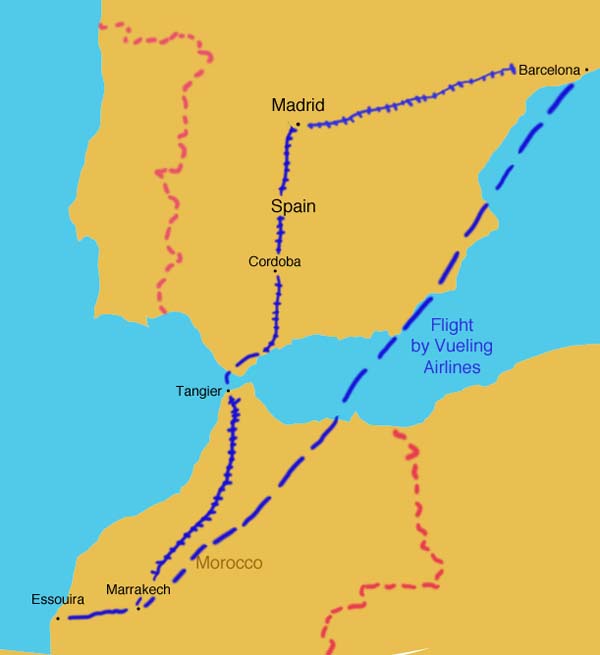 Click here to see a roll of snapshots from the cellphone camera. People don't like having their pictures taken; an exception might be made by the merchant or artisan who is trying to entice you to buy a satchel/carpet/teapot. "Every photograph is an act of aggression" – Susan Sontag Christine's extensive set of photos are on her 2bustickets blog. |
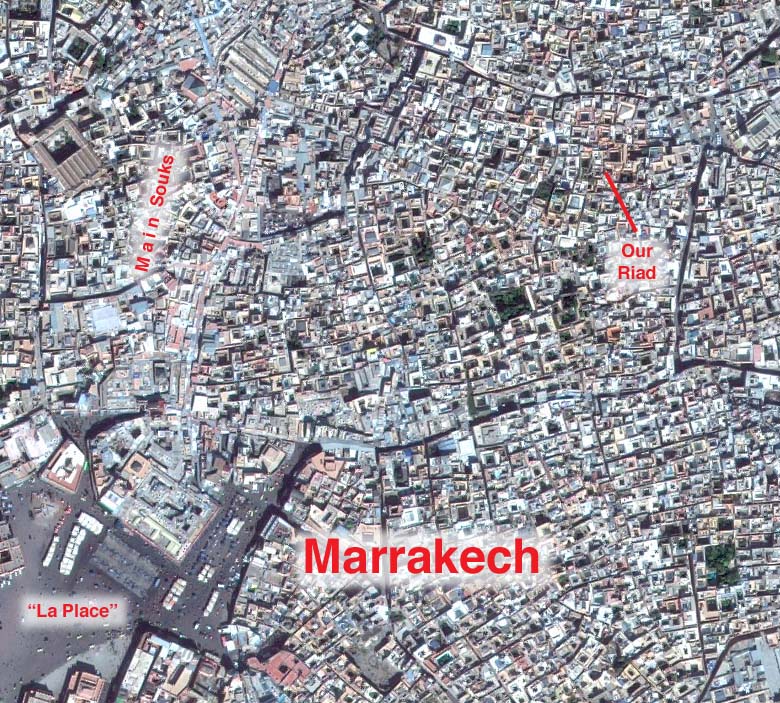
| A portion of Marrakech's huge medina (i.e.
the ancient walled city), from Google satellite view. It
took us about 20-30 minutes to walk to "La Place," formally
Place Jamaa El Fna, from our riad (apartment). A
compass was very useful for keeping a sense of direction in the
narrow, winding, high-walled derbs. The main souks
(i.e. the markets) occupy a snake-like warren running from La
Place northwards to about Mosque Ben Youssef. There are numerous
other, smaller souks in the neighbourhoods within the medina,
along with the usual rabble of small shops and vendors selling
to locals – the subject of a number of the pencil drawings
below. |
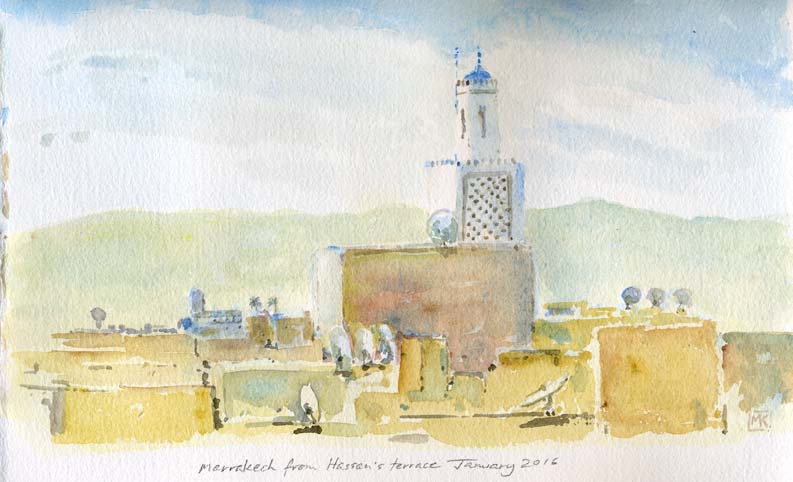
| Dusty and a bit smoggy, the Atlas Mountains in the distance, satellite dishes everywhere and a few palm trees, plus the local mosque – the view from our terrace just as the sun began to rise. |

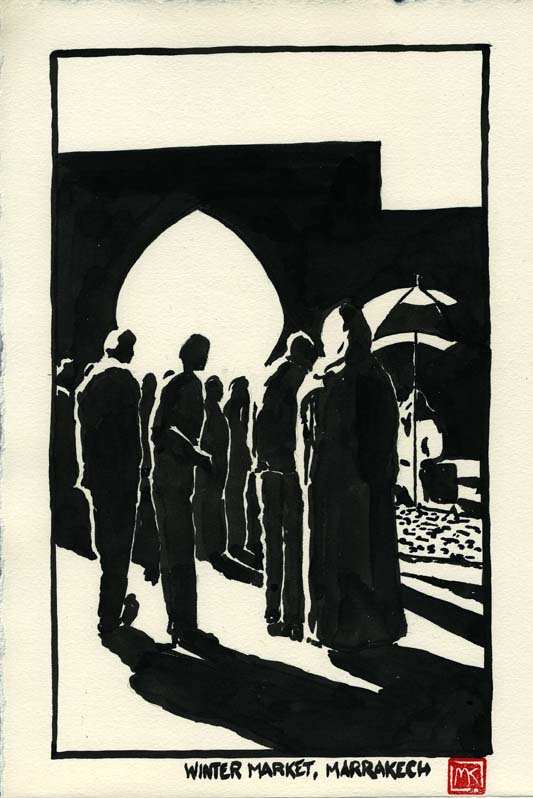
Just outside the medina ...
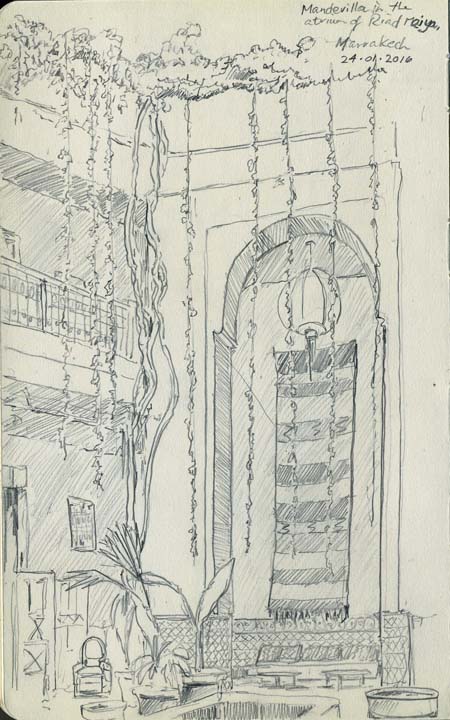 |
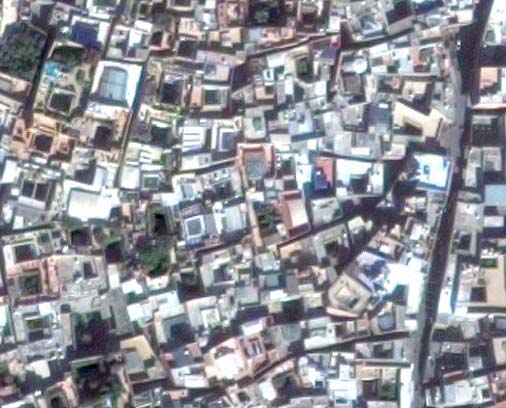 You can see from the Google satellite view how the houses abut – they have no street presence other than a windowless door – but have a square open central courtyard/atrium to the sky and a roof terrace. In this way, they are like the havelis of Rajastan (such as the one I drew in Nawalgarh near the bottom of the page here); the open atriums are like the Chinese shophouses so characteristic of Malaysia. Hassan's place, Riad Meiya on Derb Lala Azouna, where we stayed, had an additional beauty in the enormous Mandevilla vines that hung down from the terrace almost to the floor of the atrium. The sketch on the left is from the chair where I ate breakfast in the morning. |
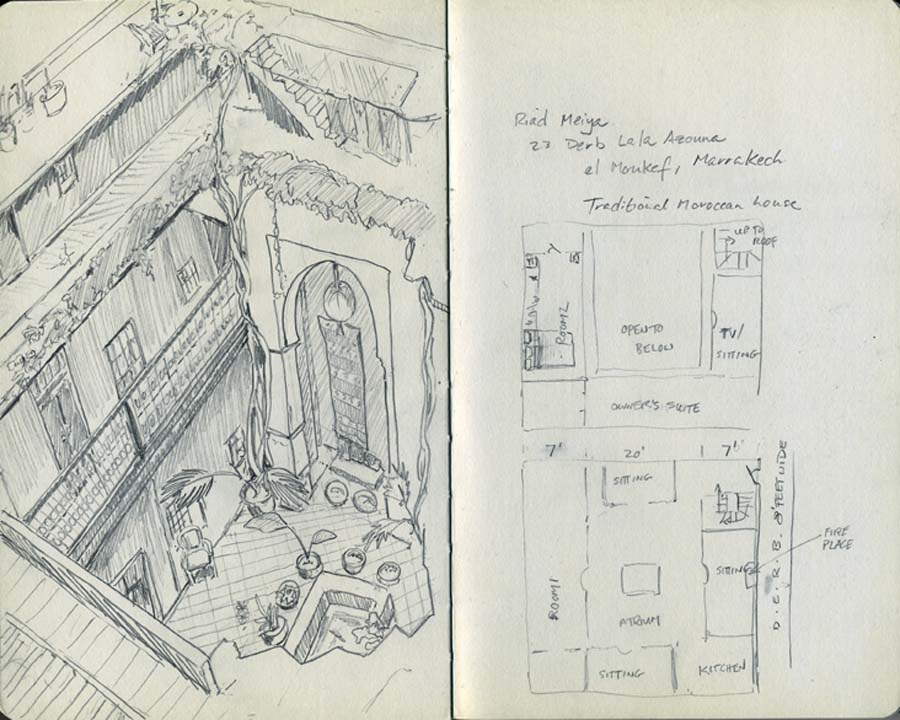
... and looks like this to a passing bird. He actually has a plastic cover over the opening, with a drain pipe in the middle, to keep the dust and crap out of the living area.
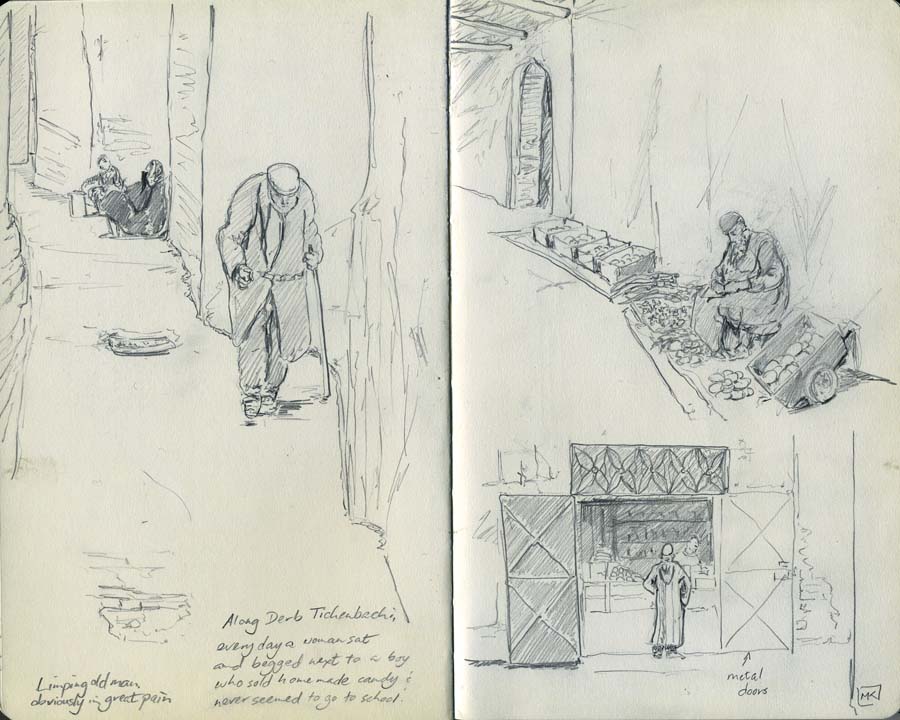
The locals shop for fresh fruit and vegetables from vendors who set up on the edge of the alleyways,
but get their morning bread and other foodstuffs from hole-in-the-wall shops which shut up completely tight overnight and,
it seems, at the whim of their owners. Il faut savoir.

The tanneries are about a 15-minute walk away; the wet, dark-brown leather patches are laid out to dry and cure in the hot sun,
probably on this square as it's about the only piece of open ground in that part of the medina.
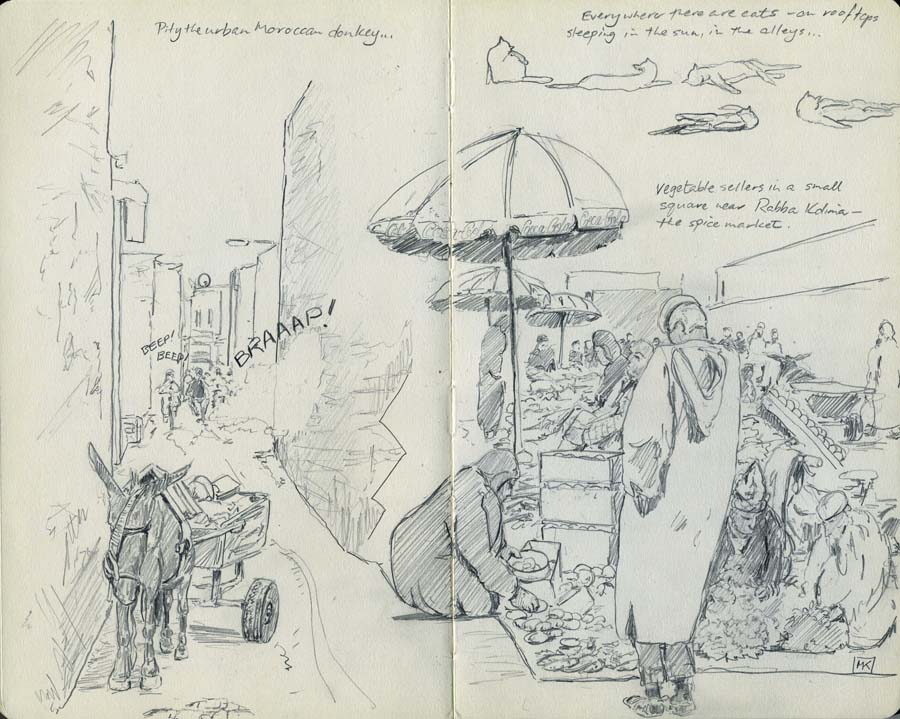
| The worst of Marrakech, worse than other Moroccan towns,
is the noise, fumes and danger from aggressive motorbikes, which
take absolute right-of-way on even the narrowest alley. The
motorbike invasion is not unique to Morocco at all, but I never
thought I would be more assaulted by them than I was in Penang
or Taipei .... However, the best of Morocco is their attitude to
cats, which are respected and valued – we didn't see a rat
anywhere – and are much more common than dogs, a big difference
between it and countries like France and Italy. |
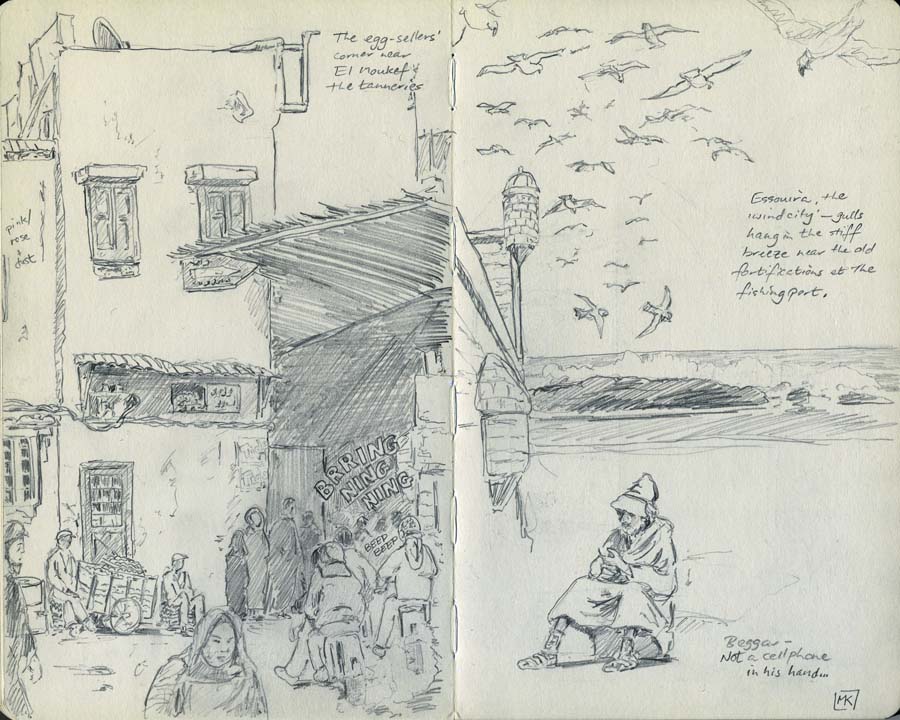
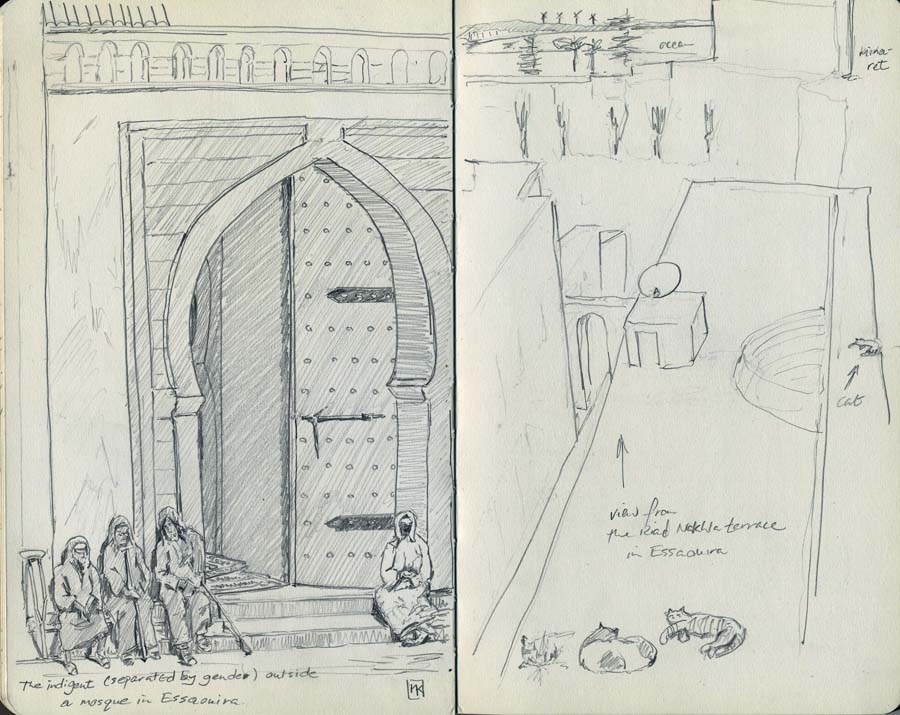


| A nice little rooftop hobby, raising pigeons, with the
certainty of having one available to pop into the tajine! |

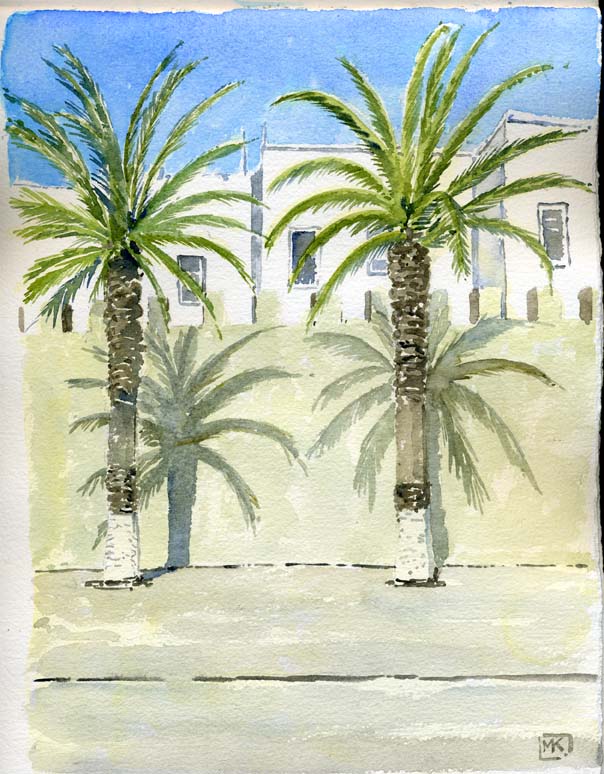
Orderly Colonial French planning outside the medina in Essouira.
Spain
| Barcelona was our major destination in Spain, but is
mainly recorded in the snapshots
popup – it's a crowded, not-especially-wonderful place to
draw. The narrow streets flanked by 6-storey buildings were full
of character but cold, especially on January mornings! El Raval,
the neighbourhood where we stayed, is a bit of an Arab quarter;
it's the area on the west side of La Rambla, that is, on the
other side of it from the more famous Barri Gotic. La Masia, in
the drawing below, was one of a myriad cafés occupied mainly by
young arty students. "Barcelona is the colour of a dog running away" – old Catalan saying used by Robert Hughes in his wonderful book, cleverly called Barcelona (Harvill, 1992), which we read while we were there. |
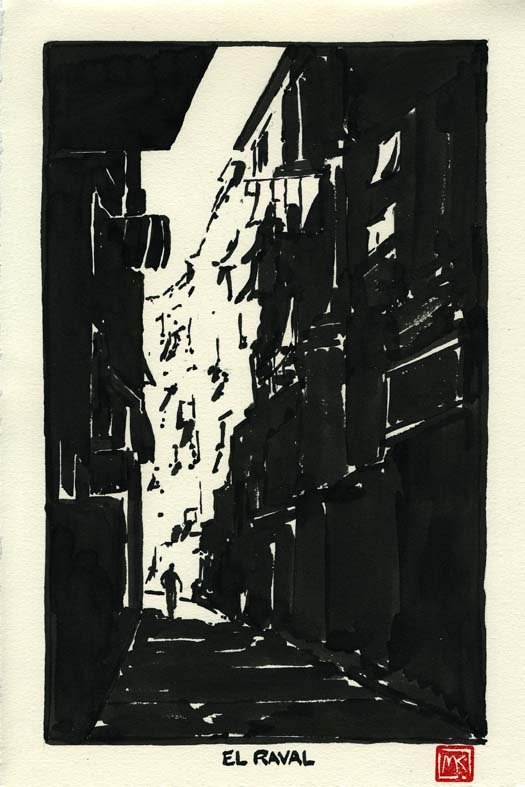
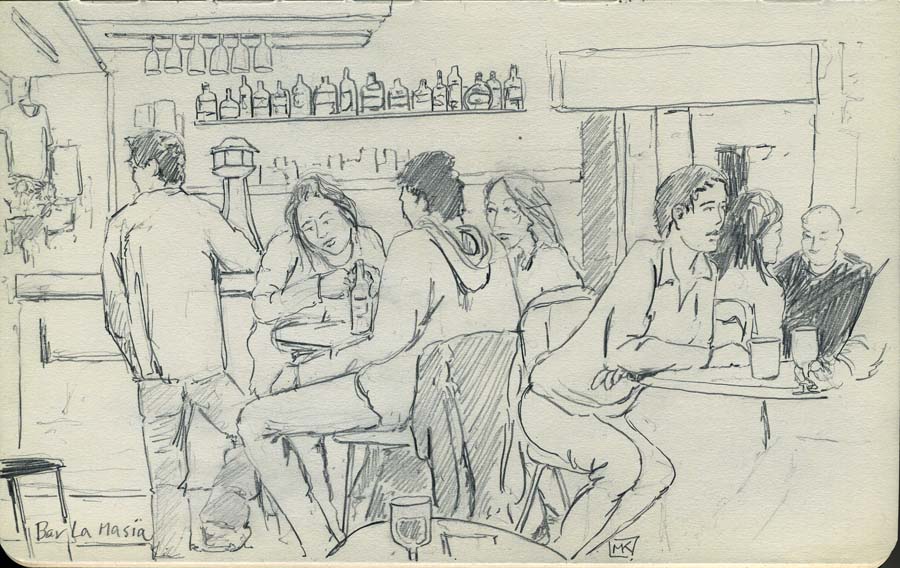
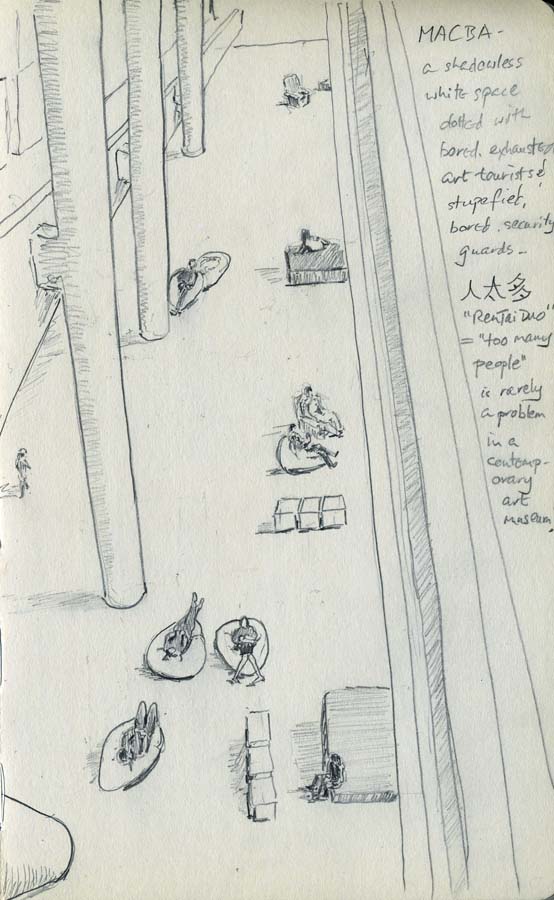
| “人太多了” (ren tai duo le, meaning
“there are too many people,” a common phrase in
China seen on the web in places such as this)
was an expression I repeated to myself as we found our
Canadian sense of personal space constantly challenged. Not
everywhere, though. Thank goodness for overfunded,
underattended contemporary art galleries such as MACBA (Museum
Art Contemporary Barca)! (Below) Much later, on a stopover on the way back north, we spent a Saturday in serene Cordoba. |
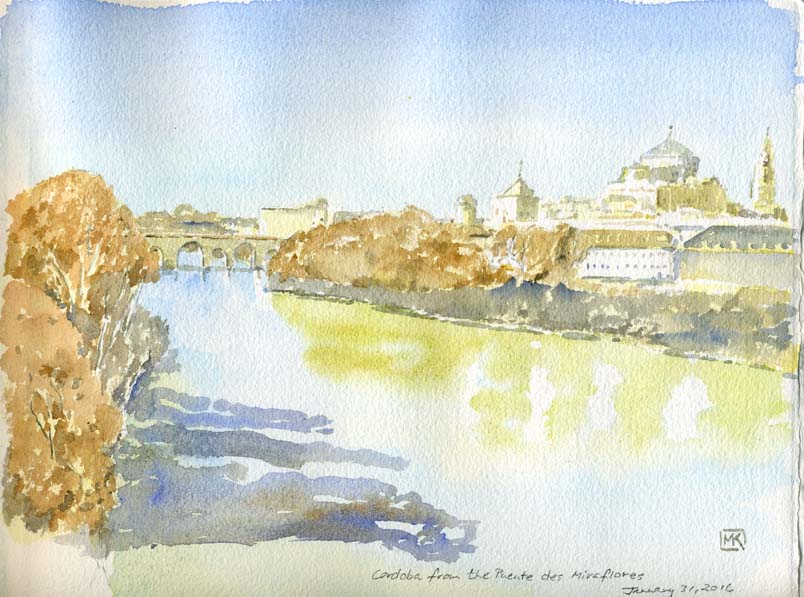
... and a final 24 hours in Madrid, with an excellent dinner in a taverna and some time sketching art and artists in the Prado.
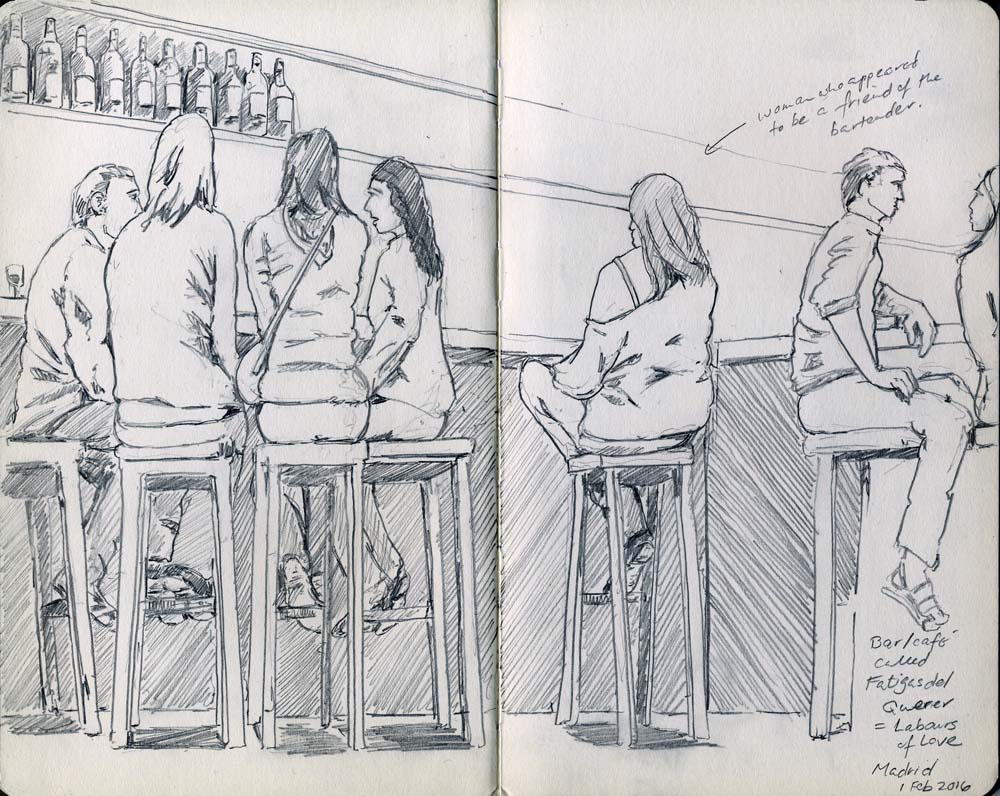
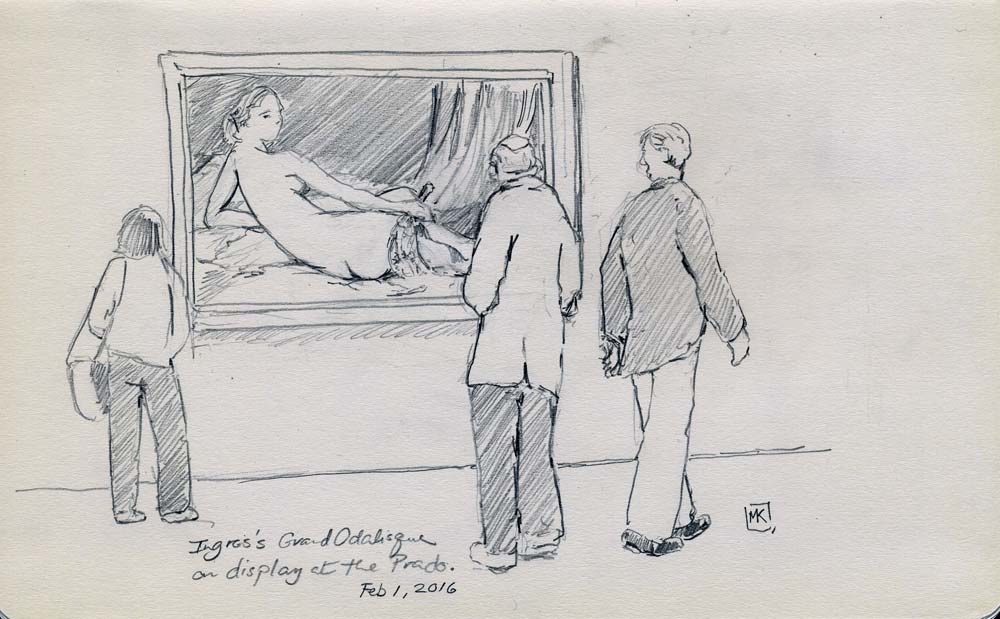
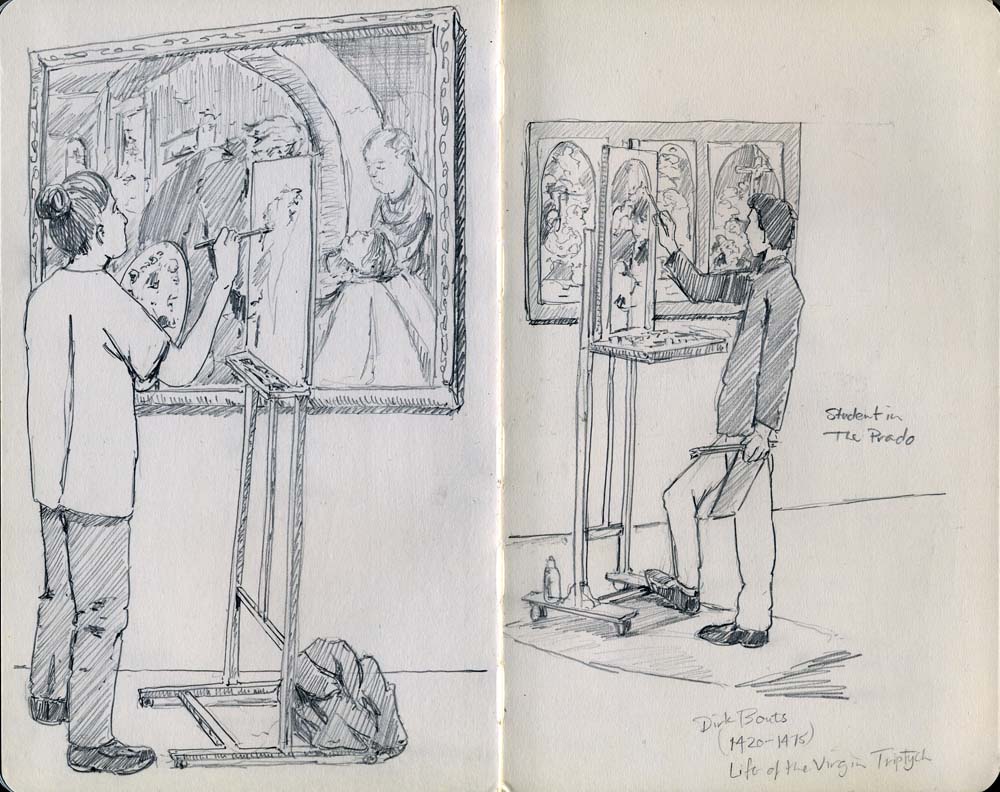
Contact me Go to home page Return to main travel page
Artwork & text © Michael Kluckner, 2015